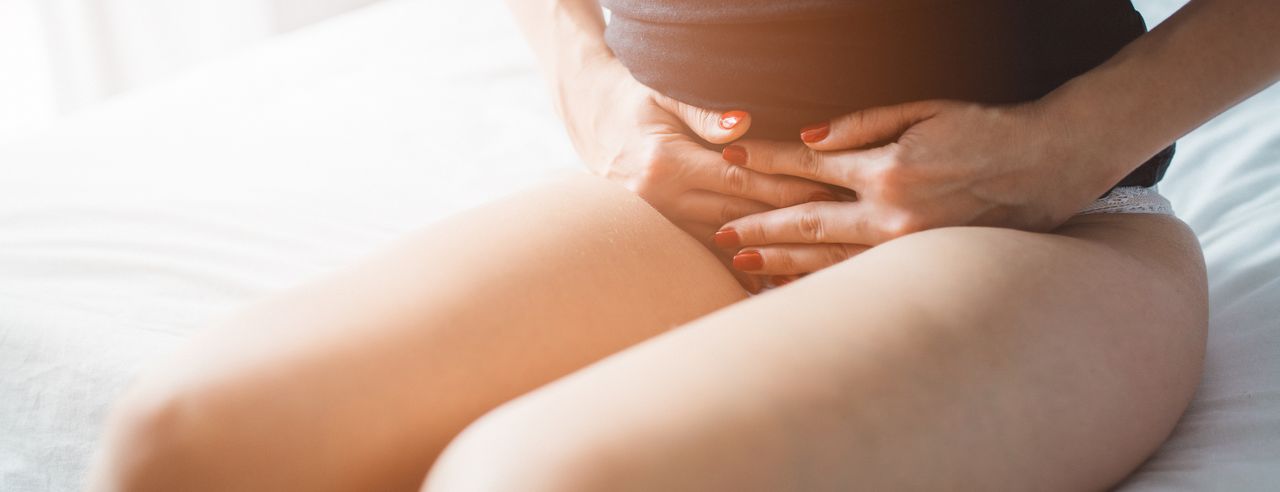
Study on moxibustion for menstrual cramps
Jing Gao et al.
September 2015
TCM (Traditional Chinese Medicine)
Women's health / Menopause
The aim of the present study under Jing Gao was to investigate the effect of moxibustion on the relief of menstrual pain and the alleviation of symptoms of dysmenorrhea in a group of young nurses in China.
A randomized, double-blind, crossover clinical trial was conducted. In the two-phase study, a total of 56 nurses with menstrual pain at Guangzhou University of Chinese Medicine in China were randomly divided into two groups. In the first phase of treatment, the participants in group A received moxibustion therapy from five days before menstruation until the onset of menstruation through a special heating box in which a burning moxa stick was fixed. The participants in group B received the same heating box, but with a paper-wrapped incense stick(placebo therapy) during the same intervention period. The acupuncture points Guanyuan (CV4) and Shenque (CV8) were selected for treatment. After the first treatment phase, which lasted two menstrual cycles, the intervention was stopped for three menstrual cycles during a wash week. In the second treatment phase, the interventions of the two groups were swapped. Group A received the placebo therapy and group B received the moxibustion therapy. NRS, VRS, PRI, VAS and BRS-6 were assessed at baseline and after each treatment phase.
There was no statistically significant difference in age, history of dysmenorrhea, length of menstrual cycle, age of menarche, duration of menstrual flow, PRI score, VAS score, BRS score and RSS score between group A and group B. After the first treatment phase, there were significant differences in the BRS-6 score between the two groups in the first menstrual cycle. In the second menstrual cycle, the VAS score, the BRS-6 score, the sensory dimension of the PRI, the affective dimension of the PR and the total score of the PRI were significantly lower in group A than in group B. NRS and VRS showedsignificant differences between the two groups after the first treatment phase using the Wilcoxon Mann-Whitney test. The frequency of weakness, loss of appetite, diarrhea and the total score showed significant differences between the two groups in the first menstrual cycle. The frequency of weakness, back pain, skin blemishes, loss of appetite, diarrhea and total score showed significant differences between the two groups in the second menstrual cycle. The severity rating of back pain, loss of appetite, insomnia and the total score showed significant differences between the two groups after the second menstrual cycle. After the three-month wash week, there were significant differences in the VAS score, BRS-6 score, sensory dimension of the PRI, affective dimension of the PR, total score of the PRI and VRS score between the two groups after the second treatment phase. Thefrequency of leg discomfort, dizziness, nervousness and the total score showed significant differences between the two groups after the second treatment phase. The severity rating of abdominal pain, weakness, leg discomfort, dizziness, nervousness and the total score also showed significant differences between the two groups after the second treatment phase.
The results suggest that moxibustion therapy with a heating box is effective for relieving menstrual pain and symptoms in young female university students in China. The effect of moxibustion could be due not only to the heat stimulation but also to the burning of the moxa stick. Box moxibustion could be recommended as a non-pharmacologic pain treatment for university students because it isinexpensive, convenient, relatively safe, and easy to self-treat at home.
The most important information on the study at a glance
- Indications
- Menstrual cramps
- Institution
- School of Nursing, Guangzhou University of Chinese Medicine, Guangzhou 510006, China
- Title
- Study on moxibustion for menstrual cramps
- Brief description
- The study shows that moxibustion effectively relieves menstrual pain and dysmenorrhea symptoms.
- Original title
- The effect of moxibustion on alleviating menstrual pain in a population of young nursing students: A prospective randomized cross-over pilot study
- Link to the study
- https://pubmed.ncbi.nlm.nih.gov/26645515/
Suitable trips for this study topic
You might also be interested in
Overweight / obesity
TCM (Traditional Chinese Medicine)
Liang Dai et al.
October 2022
The study shows: Lingguizhugan decoction improves insulin resistance in overweight people with non-alcoholic fatty liver disease.
Neurology
TCM (Traditional Chinese Medicine)
Fang-Pey Chen et al.
May 2015
Study shows that acupuncture improves Parkinson's symptoms in the short term, but the effect diminishes in the long term.
Burn-out prevention / prophylaxis
TCM (Traditional Chinese Medicine)
Julia Afrasiabi et al.
November 2021
The study shows that auricular acupressure significantly reduces burnout and secondary traumatic stress.